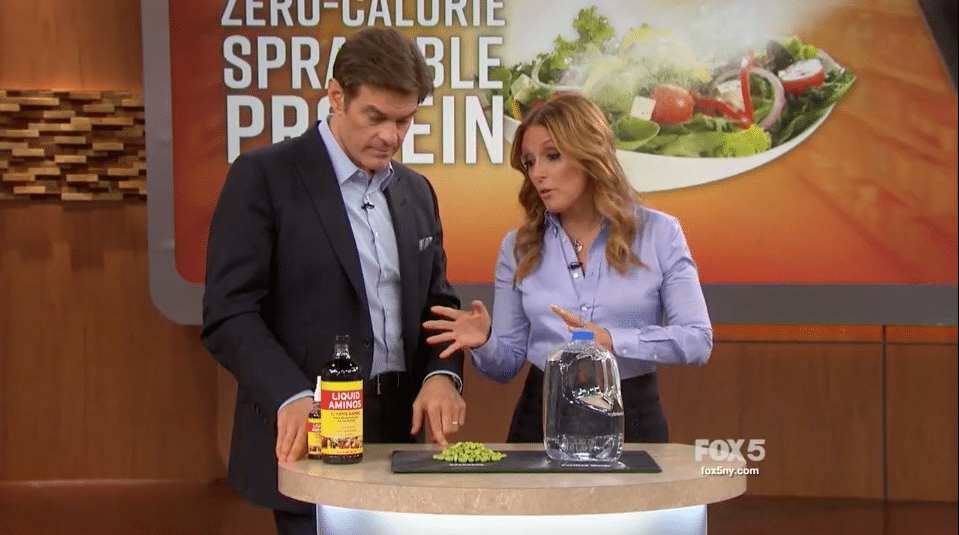
Do we have an ideal weight?
Sometimes in life, it’s easy to know what goal you’re shooting for. Maybe it’s getting that promotion, coaching your kid’s soccer team to a championship, or simply getting past the TSA before your plane takes off. Other times, however, it’s trickier to define your goals—and that’s especially true when it comes to identifying your ideal weight. You can use height/weight charts, BMI calculators, and tape measures, but they don’t really tell the whole story. Today, I’ll explain why—and I’ll share the simple four-question method I recommend.
How doctors calculate your ideal weight
There are several common methods doctors use to decide how much you should weigh. Each one is helpful, but each one has flaws. Here’s a look at them.
First, you can go by body mass index, or BMI, which is one of the most popular approaches for determining ideal weight these days. (Here’s how to calculate yours.) However, this is a pretty shaky number. For instance, here’s how TIME Magazine summarized the findings of one study analyzing the accuracy of BMI numbers:
Among the study participants, about half of women who were not classified as obese according to their BMI actually were obese when their body fat percentage was taken into account. Among the men, in contrast, about a quarter of obese men had been missed by BMI. Further, a quarter who were categorized as obese by BMI were not considered obese based on their body fat percentage. Overall, about 39% of participants who were classified as overweight by their BMI were actually obese, according to their percent body fat.
In short, while BMI can be a somewhat useful statistic, this number alone won’t tell you if you’re currently at your best weight. We’ve all read about body builders and professional athletes who have BMIs in the overweight range.
And how about old-fashioned height/weight charts like this one? Frequently, these can be misleading as well. That’s because they can’t tell you how much of your weight is fat and how much is muscle. (Neither can a regular scale—and the new scales that purport to measure your body fat as well as your weight are highly inaccurate, according to Consumer Reports.)
Another popular way to decide if you’re at your ideal weight is to measure your waist size or your waist-to-hip ratio. A waist size greater than 35 inches for a woman or 40 inches for a man can signal trouble, as can a waist-to-hip ratio greater than .8 for a woman or .9 for a man. But these numbers don’t factor in your age, and anything from inaccurate measuring to bloating can throw them off. Also, many women are naturally apple-shaped, and there’s a limit to how close they can get their ratio to the “ideal” of about 0.7 to 0.8.
In short, each of these measures, while useful, has its shortcomings. That’s why in my office, I use them to help determine a patient’s ideal weight, but I never rely solely on them. As a naturopathic physician, I don’t just look at score cards; I look at people. And I know that ideal weight varies from person to person, because no two bodies and no two people are exactly alike.
How to calculate the weight that’s right for you
If you’re trying to decide if your own weight is ideal, here’s what I recommend. Go ahead and start with your BMI, the numbers on a height/weight chart, and the numbers on your tape measure—but don’t stop there. In addition, ask yourself these questions, and think honestly about the answers:
- Do you feel STRONG at your current weight? Can you physically do all the things you need and want to do—and do them with ease and without pain?
- Do you feel ENERGETIC at your current weight? Are you peppy nearly all day, and still going strong in the evening?
- Do you feel HEALTHY at your current weight? Are you free from weight-related problems like sleep apnea, metabolic syndrome, diabetes, heart disease, high blood pressure, bad cholesterol levels, or joint pains.
- Do you feel HAPPY at your current weight? Do you enjoy buying and showing off new clothes, and are you typically standing in front of the camera rather than hiding behind it? (Note: I’m not asking if you feel SEXY at your current weight, because these days women tend to think that they’re not sexy enough unless they have movie-star bodies… a topic I’ll talk about another day.)
If your answer to all four questions is yes, that’s a big clue that you’re at a weight that works well for you—whether you’re a size 2, a size 8, or a size 14. If the answer to any of them is no, then it’s time to take off some pounds (or add some, if you’ve pushed your weight loss too far). It’s a simple formula, but I find that it’s just as useful as all those charts, scales, and measuring tapes.
How to factor in your age
Now that I’ve talked about deciding if you’re at your ideal weight right now, I want to talk about one more thing: Should the number on your scale stay exactly the same for your entire life, or is that unrealistic?
Here’s the deal. As a weight loss and anti-aging expert, I’m all about staying young and slim forever. However, that doesn’t mean that your body will stay exactly the same forever.
For instance, I’d love to have the same figure I had in high school. Really, I would. But I’m more than three decades older than I was then, I’ve had two kids, and I’m smack in the middle of perimenopause. So I don’t strive to look exactly like I did when I was fifteen, because it’s not going to happen. As I like to say, the furniture gets rearranged a little as we age—and an extra pound or inch here and there isn’t the end of the world.
So don’t worry if your body changes a little bit over time, because that’s normal and perfectly okay. Just keep asking yourself those same four questions—Do you still feel strong, energetic, healthy, and happy?—and make sure that the answer to each one is yes.
However, if you’re gaining lots of belly fat, adding a clothing size every decade, or feeling old and tired and unhappy about your appearance, don’t accept this as part of the aging process. Instead, take off those extra pounds with my Bone Broth Diet, and get back to a weight that’s ideal—not according to the height/weight charts and BMI calculators and tape measures, but according to you.
Keep thinking Big and living BOLD!









